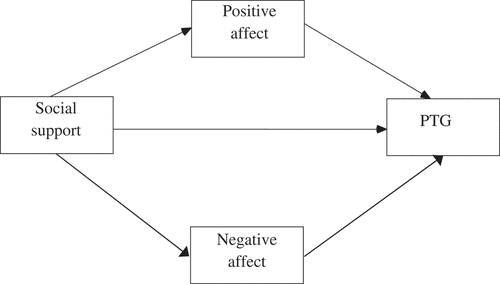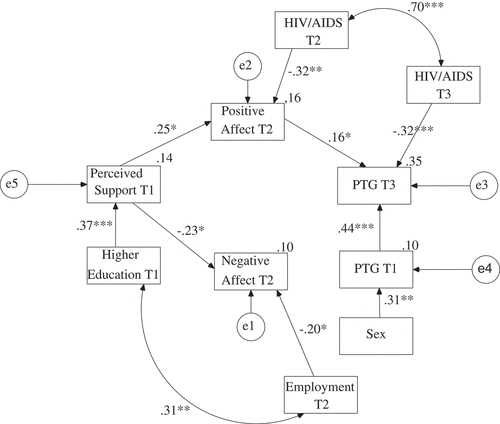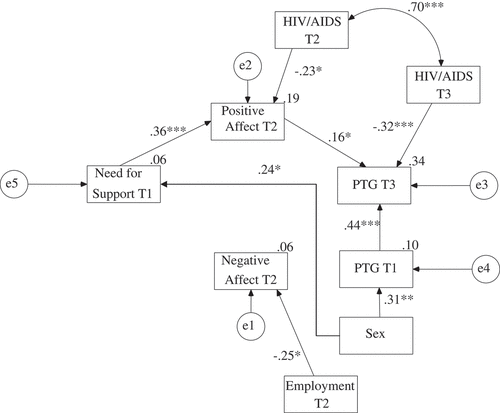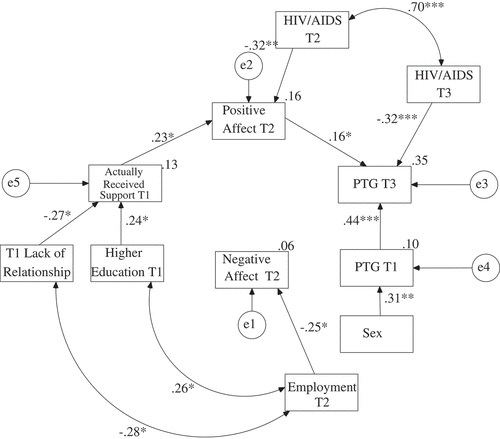Figures & data
Table 1. Socio-medical variables in the studied final sample (N = 82) and in the drop-out group (N = 47).
Figure 1. Preliminary model of the relationship between PTG, positive and negative affect and social support.

Table 2. Mean values of PTGI, PANAS and BSSS in the studied final sample (N = 82) and in the drop-out group (N = 47).
Table 3. Changes in three assessments with respect to variables in the PTGI, PANAS and BSSS with results of repeated measures ANOVA.
Table 4. Results of multiple regression analysis. Selection of control variables out of socio-medical data.
Table 5. Correlations between analysed variables included in path analysis.
Figure 2. The final model of the relationship between PTG and perceived support, positive and negative affect with regression coefficients.
Note. T1 = First Assessment; T2 = Second Assessment; T3 = Third Assessment.*p < .05; **p < .01; ***p < .001.



